According to the late Stephen Covey, one of the seven habits of highly successful people is to plan your work and work your plan. Almost nowhere is this more important than in the gym. If you go to the gym without a specific plan, chances are you'll just wander around trying a little of this and a little of that without accomplishing anything that will lead to lasting changes.
While an exercise plan is essential, it doesn't need to be overly complicated and certainly doesn't even need to involve a lot of different equipment or doing a number of exercises for individual muscles. In the past few years, many strength and performance coaches who work with top athletes have starting applying the KISS method: Keep It Simple Stupid. And, because they work with folks who exercise for a living, it’s probably not a bad idea to follow their lead.
If your primary goal for exercise is weight loss, remember that muscles use oxygen to help fuel contractions. The body expends approximately 5 calories to use 1 liter of oxygen; therefore, the more muscle tissue involved in an exercise program, the more calories burned during a workout. If the goal is to do an efficient and effective workout in a limited amount of time, it should include movement-based exercises that involve a number of joints and muscles simultaneously. The more muscles and whole-body movements you use during a workout, the higher your caloric expenditure.
Based on these considerations, here are five exercises that should be included in every workout:
1. A hip-dominant exercise. Examples: glute bridge, squat, deadlift, lunge, step-up
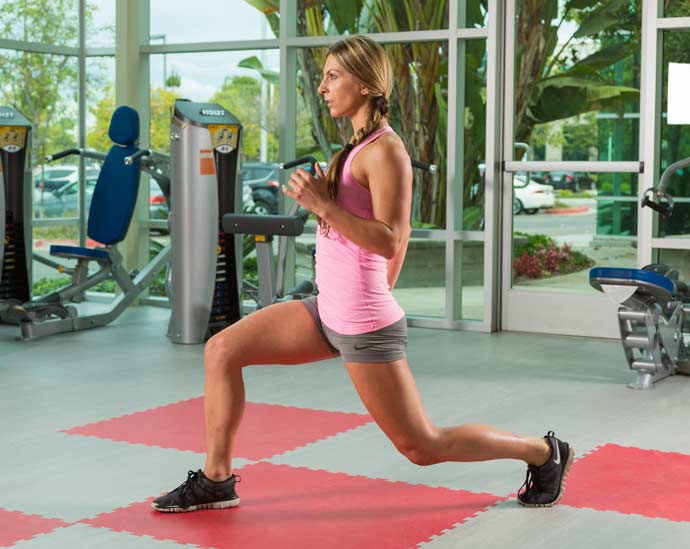
There is one thing that most top athletes and dancers have in common: a well-shaped behind. The reason is that the hips are one of the most mobile joints in the body and the gluteus maximus (aka butt, rear-end or booty) muscles that control that mobility are responsible for generating strength and power, which is then used by all other segments in the body. Exercises that engage the muscle mass around the hip will develop functional strength, shape and sculpt this highly visible muscle and help burn more calories during the workout.
2. A plank or one of its many variations.
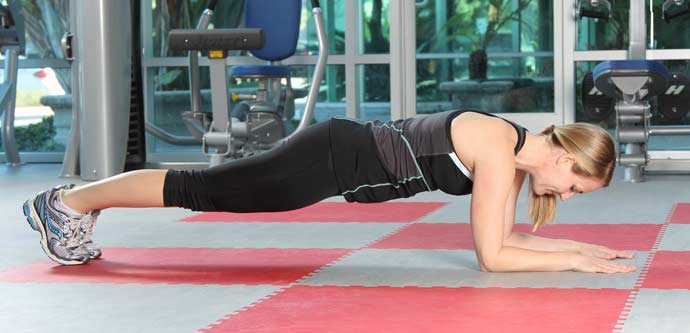
The body is organized into two primary segments: upper and lower, which are connected via the spine and trunk muscles. Planks, and their many variations, are an important exercise for creating stability in the muscles around the spine that link the upper and lower body. The cool thing is that the core muscles that connect the upper and lower body act as a corset; if they get stronger, they can actually help your stomach become flatter. When doing a plank it’s important to keep the hips and shoulders at the same height so the spine is in a relatively neutral position. Once you master the basic plank (holding it for 45 seconds or longer without dropping your hips), you can progress to one of the more challenging variations, which can involve movement of the hips or shoulders while maintaining a stable spine.
3. Pulling movements. Examples: bent-over row, pull-up, chin-up, TRX row

Chances are that you spend at least a portion of your day using a computer or mobile device. Whether we are sitting at a desk or using a tablet, most of us have a habit of slouching forward, which can cause the shoulders to internally rotate. Try this: Sit up nice and tall, raise your right hand in front of your body as high as you can; now slouch and try the same thing. When we slouch we limit the space in our shoulder joint that allows easy, efficient overhead movements. Doing pulling exercises with a tall spine and a neutral (palms facing each other) or supinated (palms up) grip places the glenohumeral joint of the shoulder in an externally rotated position, which helps alleviate pressure in the joint that occurs as a result of sitting at a computer all day. Make sure to add one or two pulling movements to each workout (standing exercises, like the bent-over barbell or TRX row are particularly beneficial).
4. Overhead lift while standing. Examples: standing barbell press, push press
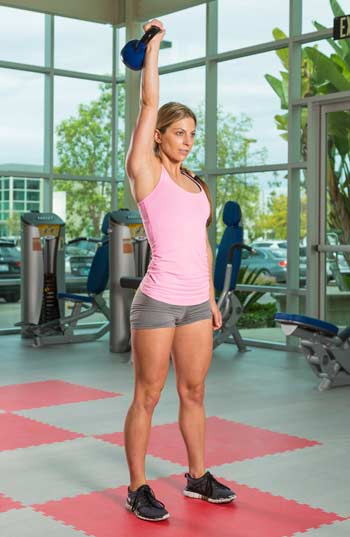
Other than certain weight machines or seated dumbbell presses, how many times do you find yourself having to lift something over your head while in a seated position? Here’s another question: How many times do you lift something overhead with your elbows out to the side (in the 3 and 9 o’clock positions)? The shoulders are most effective during overhead movements when the elbows are pointed toward the front of the body (the 11 and 1 o’clock positions), which allows the “cup” of the shoulder blade to properly move and stabilize the “ball” of the humerus (upper arm bone) when your arm is moving overhead. Doing an overhead press while standing allows you to engage and use the muscles that connect your hips to your trunk, if you're seated, these muscles are not involved and you lose the opportunity to burn a few extra calories. Whether you use a barbell, dumbbells, kettlebells or medicine balls, lifting something heavy overhead can help you develop strength from the ground up through hips and trunk and out through the upper extremities.
5. Explosive movements. Examples: jumps, medicine ball throws, explosive lifts: power clean, push press, snatch
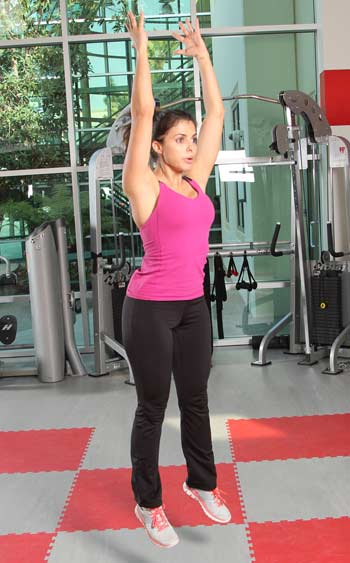
This isn’t a specific exercise, but refers to the tempo or speed of an exercise movement. Muscles are enveloped and connected via elastic connective tissue called fascia. When fascia is rapidly lengthened it stores mechanical energy, which is then released during the shortening phase. Think of fascia like a rubber band—the more quickly it is lengthened, the more explosive it is when released. Overall, this action expends more energy, helps the fascia become more resilient and can, after a period of time, help create a more youthful muscle structure. However, don’t just jump right into explosive movements (pun intended) for a lot of repetitions. Start with smaller movements for one or two sets of three to four repetitions before increasing intensity by changing exercises and number or repetitions.
There you have it, five exercises that are the foundation of any exercise program. The following sample workout demonstrates how to organize these exercises into a time-efficient program that can help you see results. If you want to learn a program that you can do on your own, we recommend working with an ACE-certified Personal Trainer or taking classes with an ACE-certified Group Fitness Instructor.
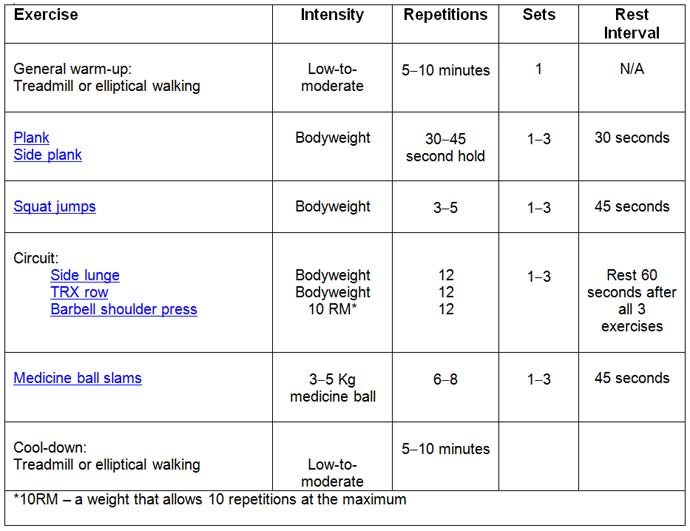




 by
by 




 by
by